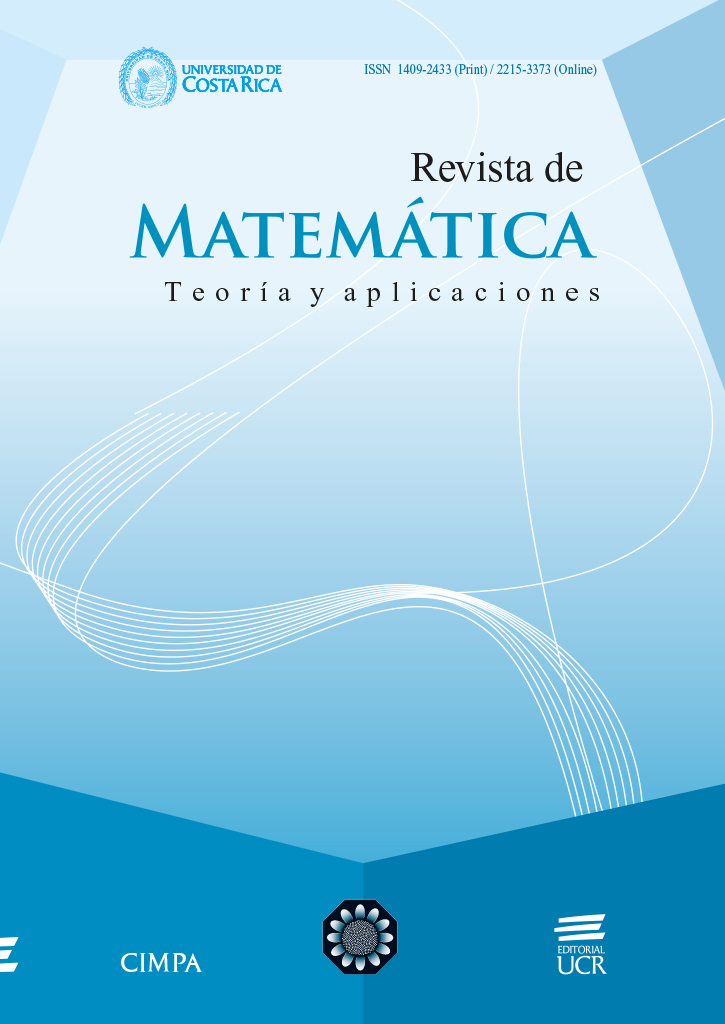Resumen
En este trabajo se obtienen dos soluciones exactas de las ecuaciones de Einstein para una simetría anisotrópica y homogénea del Tipo Petrov D, la diferencia entre ambas soluciones radica en que tan relevante es la expansión que se presenta inicialmente, ya sea en un eje o en un plano perpendicular. Dichas soluciones representan una mezcla de dos fluidos con mínima interacción: energía oscura (P = −µ) y radiación (P = µ/3). Se estudia las singularidades y la influencia que estos fluidos tienen en esta métrica; así como el parámetro de Hubble, el parámetro de desaceleración y la influencia que estos fluidos tienen en ellos. Además, se determina su temperatura y el papel que ambos juegan en esta magnitud.
Citas
R. Alvarado, Cosmological exact solutions set of a perfect fluid in an anisotropic space-time in Petrov type D, Advanced Studies in Theoretical Physics 10 (2016), no. 6, 267–295. Doi: 10.12988/astp.2016.6311
R. Alvarado, The Hubble constant and the deceleration parameter in anisotropic cosmological spaces of Petrov type D, Advanced Studies in Theoretical Physics 10 (2016), no. 8, 421–431. Doi: 10.12988/astp.2016.6930
R. Alvarado, Thermodynamics and small temporal variations in the equations of state of anisotropic cosmological models of Petrov type D, Advanced Studies in Theoretical Physics 11 (2017), no. 1, 9–17. Doi: 10.12988/astp.2017.6932
R. Alvarado, Exact cosmological solutions of isobaric scalar fields in space-times: anisotropic of the type of Petrov D and isotropic homogeneous, Advanced Studies in Theoretical Physics 12 (2018), no. 7, 319–333. Doi: 10.12988/astp.2018.8937
C.L. Chang, K.M. Huffenberger, B.A. Benson, F. Bianchini, J. Chluba, J. Delabrouille,. . . ,C. Zhang Cosmic microwave background measurements, Snowmass Cosmic Frontier, arXiv:2203.07638v1 [astro-ph.CO], 2021. arxiv.org/pdf/2203.07638v1
I. Dimitrijevic, B. Dragovich, A.S. Koshelev, Z. Rakic, J. Stankovic, Some cosmological solutions of a new nonlocal gravity model, arXiv:2006.16041 [gr-qc], 2020. arxiv.org/abs/2006.16041
R. Durrer, The cosmic microwave background: The history of its experimental investigation and its significance for cosmology, Classical and Quantum Gravity 32 (2015), no. 12, 124007. Doi: 10.1088/0264- 9381/32/12/124007
O. Farooq, B. Ratra, Hubble parameter measurement constraints on the cosmological deceleration-acceleration transition redshift, The Astrophysical Journal 766 (2013), no. 1, L7. Doi: 10.1088/2041-8205/766/1/L7
D. Huterer, The accelerating universe, Adventures in Cosmology (2011), 321–353. arXiv:1010.1162v3 [astroph.CO], 2011. arxiv.org/abs/1010.1162
J.A.S. Lima, R.F.L. Holanda, J.V. Cunha, Are galaxy clusters suggesting an accelerating universe independent of SNe Ia and Gravity Metric Theory?, AIP Conference Proceedings 1241 (2010), 224–229. Doi: 10.1063/1.3462638
A.M. Lopez, R.G. Clowes, G.M. Williger, A giant arc on the sky, arXiv:2201.06875 [astro-ph.CO], 2022. Doi: 10.48550/arXiv.2201.06875
J.C. Mather, E.S. Cheng, R.E. Eplee, R.B. Isaacman, S.S. Meyer, R.A. Shafer, . . . , D.T. Wilkinson, A preliminary measurement of the cosmic microwave background spectrum by the cosmic background explorer (COBE) satellite, Astrophysical Journal Letters 354 (1990), L37. Doi: 10.1086/185717
D. Mihu, Dynamical fluid-type universe scenario with dust and radiation, arXiv:1609.00589v2 [gr-qc], 2016. Doi: 10.48550/arXiv.1609.00589
S. Perlmutter, G. Aldering, G. Goldhaber, R.A. Knop, P. Nugent, P.G. Castro,. . . ,W.J. Couch, Measurements of omega and lambda from 42 highredshift supernovae, The Astrophysical Journal 517 (1999), 565–586. Doi: 10.48550/arXiv.astro-ph/9812133
A.G. Riess, A.V. Filippenko, P. Challis, A. Clocchiatti, A. Diercks, P.M. Garnavich, . . . , R.P. Kirshner, Observational evidence from supernovae for an accelerating universe and a cosmological constant, The Astronomical Journal 116 (1998), no. 3, 1009–1038. Doi: 10.1086/300499
A.G. Riess1, L.-G. Strolger, J. Tonry, S. Casertano, H.C. Ferguson1, B. Mobasher,. . . ,Z. Tsvetanov, Type Ia supernova discoveries at z > 1 from the Hubble Space Telescope: Evidence for past deceleration and constraints on dark energy evolution, The Astrophysical Journal 607 (2004), no. 2, 665–687. Doi: 10.1086/383612
B. Saha, H. Amirhashchi, A. Pradhan, Two-fluid scenario for dark energy models in an FRW universe-revisited, Astrophysics and Space Science 342 (2012), 257–267. Doi: 10.1007/s10509-012-1155-x
R. Sussman, D. Pavón, Exact inhomogeneous cosmologies whose source is a radiation-matter mixture with consistent thermodynamics, Physical Review D 60 (1999), 104023. Doi: 10.1103/PhysRevD.60.104023
M. Tsamparlis, A. Paliathanasis, Three-fluid cosmological model using Lie and Noether symmetries, Classical and Quantum Gravity 29 (2011), no. 1, 015006. Doi: 10.48550/arXiv.1111.5567
##plugins.facebook.comentarios##

Esta obra está bajo una licencia internacional Creative Commons Atribución-NoComercial-CompartirIgual 4.0.
Derechos de autor 2022 Andrés A. Angulo Sibaja, Rodrigo Alvarado Marín, Mauricio Vargas Obando

